George Mulcaire
Hierarchical Character-Word Models for Language Identification
Aug 10, 2016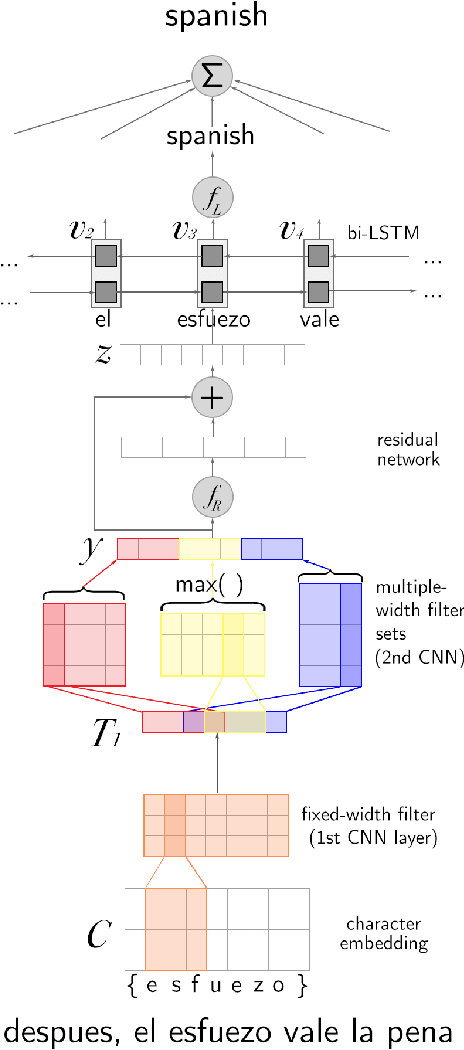
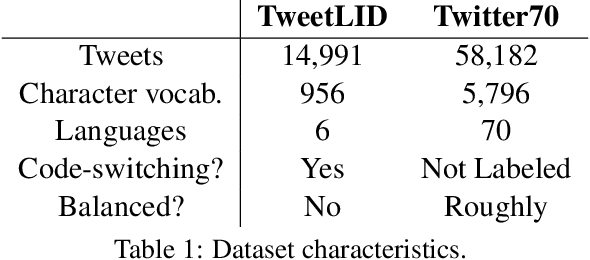
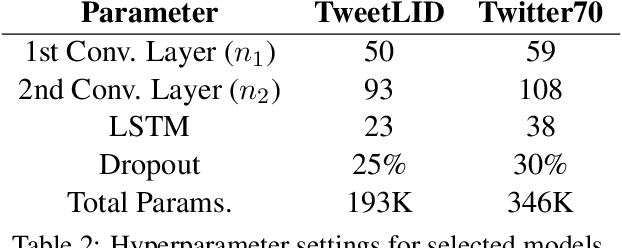
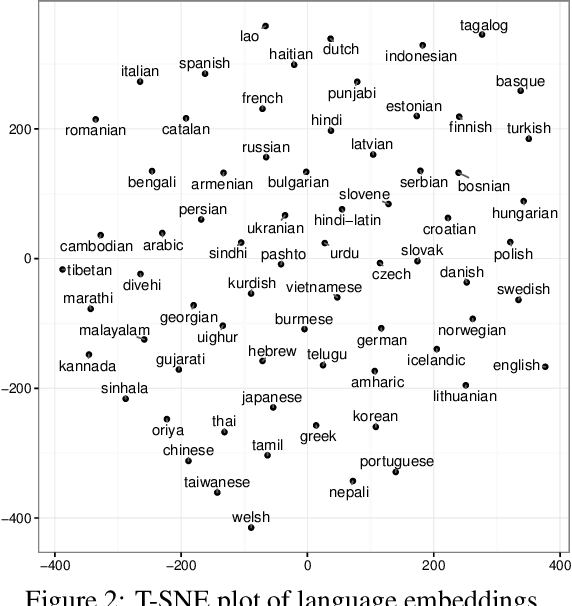
Abstract:Social media messages' brevity and unconventional spelling pose a challenge to language identification. We introduce a hierarchical model that learns character and contextualized word-level representations for language identification. Our method performs well against strong base- lines, and can also reveal code-switching.
Many Languages, One Parser
Jul 26, 2016Abstract:We train one multilingual model for dependency parsing and use it to parse sentences in several languages. The parsing model uses (i) multilingual word clusters and embeddings; (ii) token-level language information; and (iii) language-specific features (fine-grained POS tags). This input representation enables the parser not only to parse effectively in multiple languages, but also to generalize across languages based on linguistic universals and typological similarities, making it more effective to learn from limited annotations. Our parser's performance compares favorably to strong baselines in a range of data scenarios, including when the target language has a large treebank, a small treebank, or no treebank for training.
Massively Multilingual Word Embeddings
May 21, 2016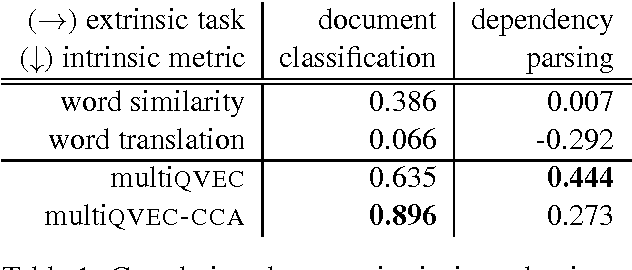
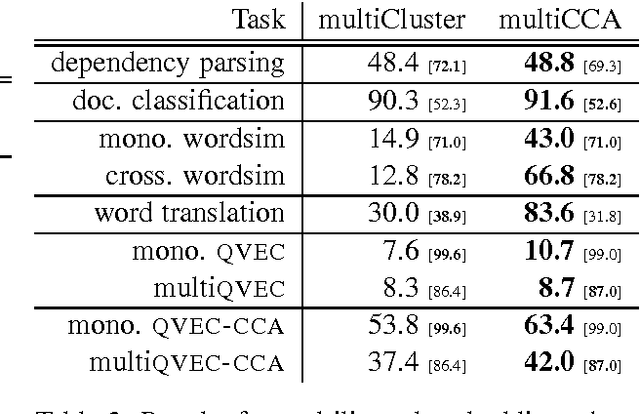
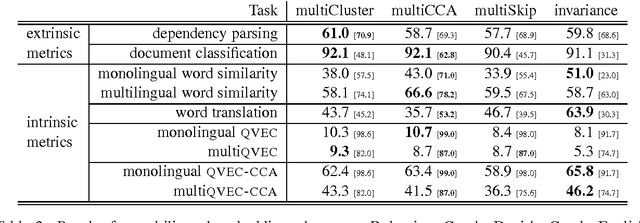
Abstract:We introduce new methods for estimating and evaluating embeddings of words in more than fifty languages in a single shared embedding space. Our estimation methods, multiCluster and multiCCA, use dictionaries and monolingual data; they do not require parallel data. Our new evaluation method, multiQVEC-CCA, is shown to correlate better than previous ones with two downstream tasks (text categorization and parsing). We also describe a web portal for evaluation that will facilitate further research in this area, along with open-source releases of all our methods.
 Add to Chrome
Add to Chrome Add to Firefox
Add to Firefox Add to Edge
Add to Edge